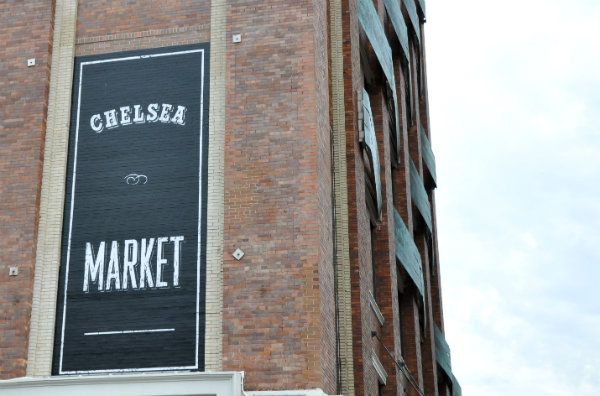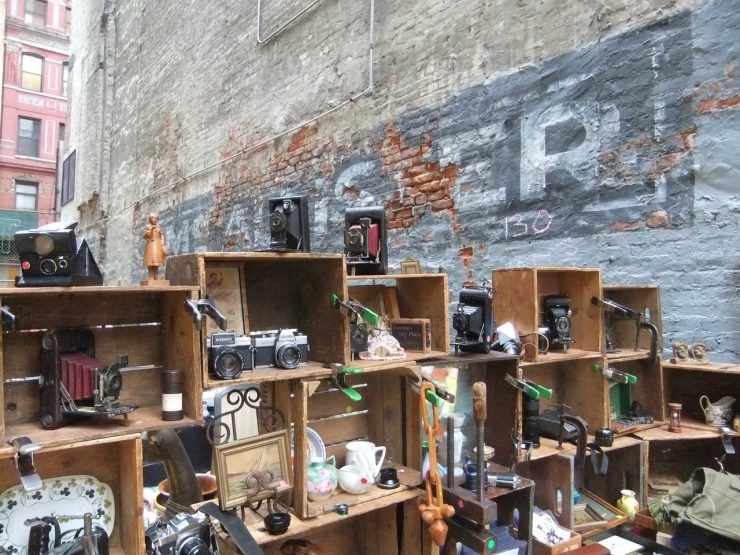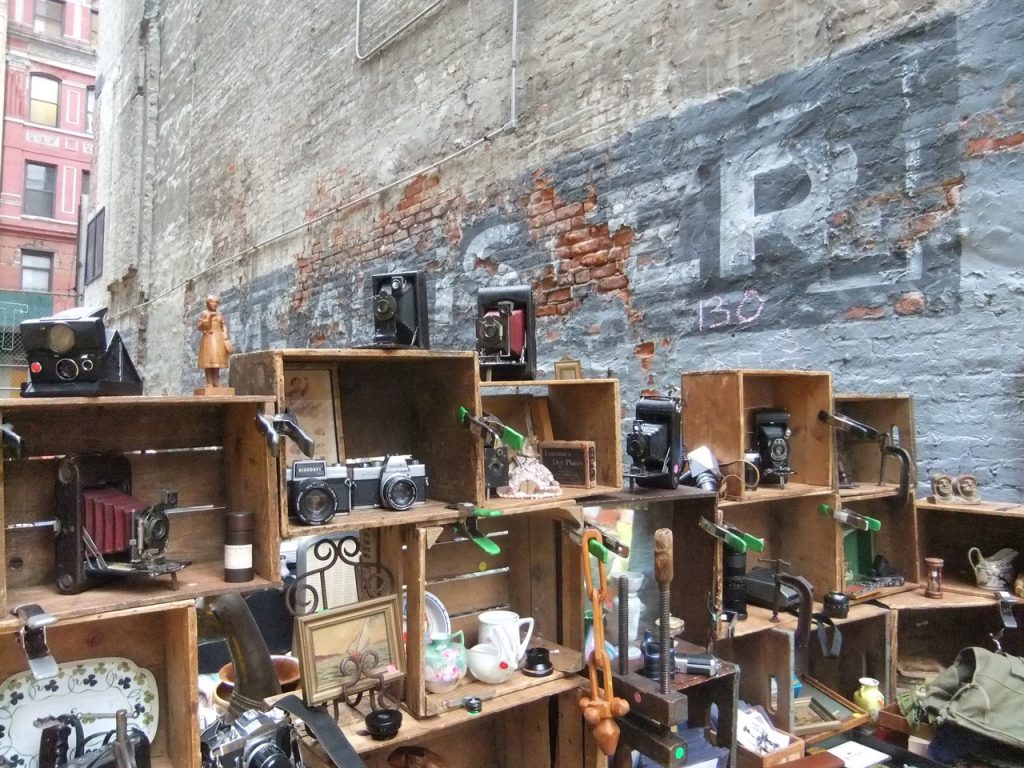Wentworth Park markets, Paddington markets, Dirty Jane Bowral And Canberra, Vinnies Salvation Red Cross all Around Australia ...
Nostalgia hung heavy in the air on the final day. As recounted in the New York Times, “Andy Warhol would arrive at the flea markets on the West Side of Manhattan before noon on Sundays in an old Dodge convertible. It was the 1980s, and on weekends, the parking lots near West 25th Street and Sixth Avenue were filled with vendors selling tchotchkes, collectibles and fine antiques.

Heads up: this post contains affiliate links.
Housed in the old biscuit factory where Oreo cookies were invented, and residing under the same roof as Google offices, Chelsea Market is New York’s number one food destination, and for very good reason!
Welcoming some six million visitors each year, the warehouse takes up a full square block in the trendy Meatpacking District.
An introductory and idiosyncratic guide to flea markets
Know your vendors
For friends and preferred customers, a vendor will often not only set aside objects but, during the week, will look for objects in estates and elsewhere that those customers collect. Vendors rarely have all their offerings at the flea market, with many keeping the greater share in storage facilities. If you are friendly with a vendor, they may allow you into those facilities. Finally, a vendor with whom you are friendly will give you a price on objects that is not available to others.
Know your pickers
Pickers are those at the flea market who are buying to resell to dealers or online. The value of the picker is that he or she will have expertise in a specific subject, which means that if you are trying to identify an obscure mark on a ceramic plate or to decide whether a painting is from the 17th century or a copy, or if you are wondering whether a necklace is real or costume, a picker ought to be able to give you an immediate answer. To find the right picker, ask a vendor.
French singer France Gall in a New York flea market, 1970s © Paris Match via Getty Images
Turnover should be healthy
The size of a flea market is less important than the frequency with which the objects in the flea market turnover. The ideal flea market has a high rate of turnover, maximising the chance that you will find the objects you are searching for and minimising the time that the vendor has to understand what they are selling.
The random factor
Flea markets have intrinsic dispositions, so while you may enter certain of what you want to find, allow the flea market to introduce you to new and more fruitful categories. Also, one of the fascinations of the flea market, as the Surrealists noted, is the random juxtaposition of objects — it is a dreamscape, opening the mind to new and poetic areas. Take a notebook.
Defects mean discounts
For those buying vintage clothing, make certain that zippers work, that there are no moth holes, and that wear on the sleeves and collars is minimal. Any of these, pointed out to the vendor, should cause the vendor to drop the price.
The Chelsea ‘flea’ and me: memories of the famous
New York market In an extract from his memoir, writer and collector Michael Rips recalls its heyday
Beyond the garage was a constellation of open-air parking lots, which were also rented out to vendors on the weekends. There were three large lots on Sixth Avenue between 23rd and 27th Streets. Down Sixth Avenue, between 16th and 17th Streets, was another lot; this was the smallest of the lots and was, typically, the last that a buyer would visit.
In the 1970s and 1980s, as the garment industry evaporated, a cataract of underground clubs, artists, writers and junkies flowed into the neighbourhood. At the same time, with the price of real estate rising in the West Village, gays and lesbians moved into Chelsea, which was nearby and more affordable. Gay bars and sex shops filled Seventh and Eighth Avenues. Robert Mapplethorpe and Patti Smith took up residence in the Chelsea Hotel in 1969.
“It was a Sunday ritual for my first decade in New York City to have breakfast in the Meatpacking District at Florent (which also closed) and then head north to the Chelsea Flea. We would do the outdoor parking lots first and then eventually head indoors to the Garage on 25th Street. The people watching was as interesting as the furniture shopping and would never disappoint. The challenge back then, pre-Uber, was how do I get ‘it’ home, whatever ‘it’ was—a bicycle, a sofa, vintage clothes, or art. Part of the adventure was getting on the subway carrying odd things back to my apartment in Brooklyn (like the ‘lost Kandinsky,’ which I swore was going to end up being the real thing and worth $40 million). My first two apartments were furnished primarily with things from the flea market. Call me nostalgic, but I’m always saddened when cool, quirky, and unique places like this close their doors, perhaps because I didn’t move to New York City for cookie cutter.”


